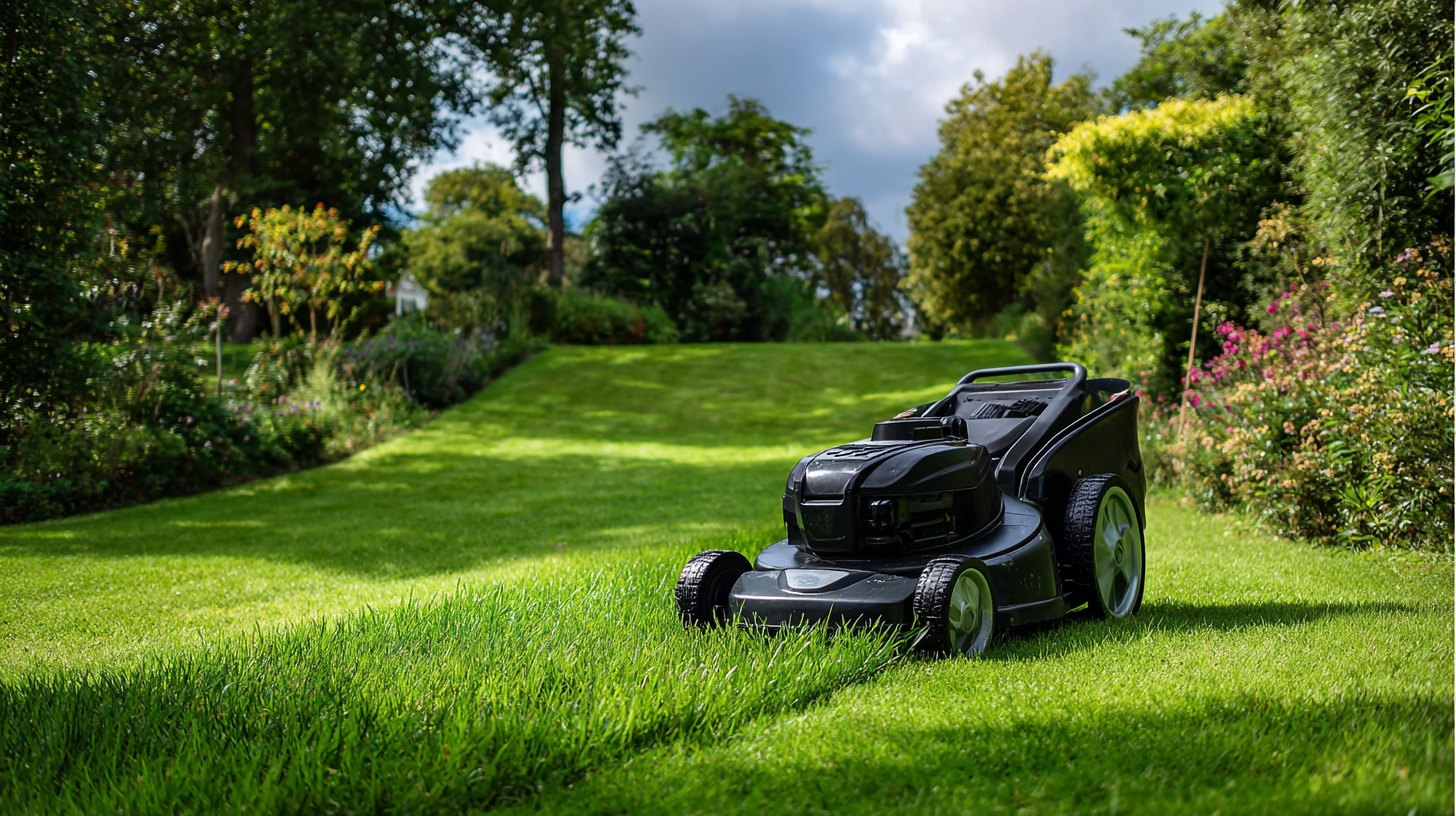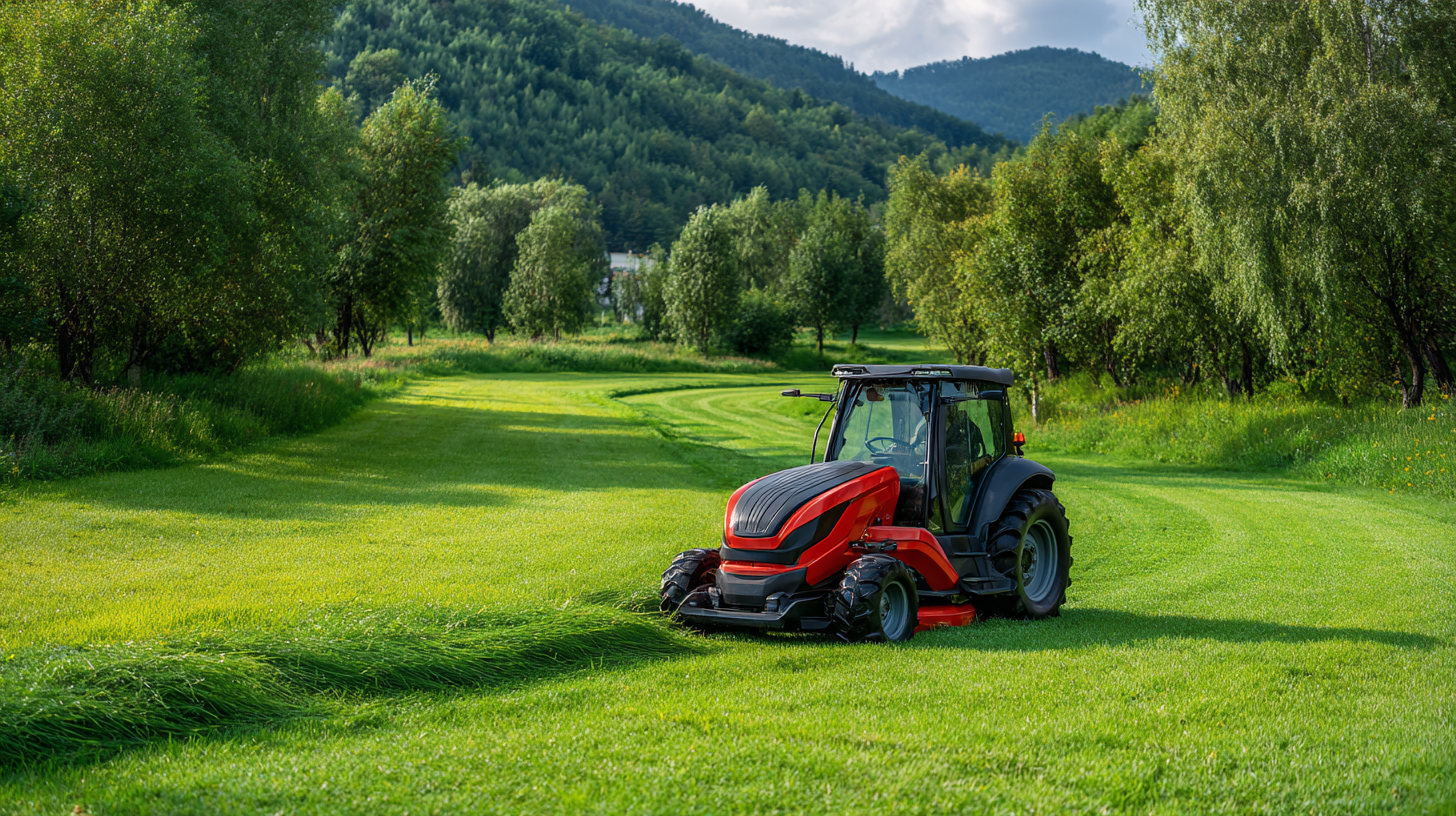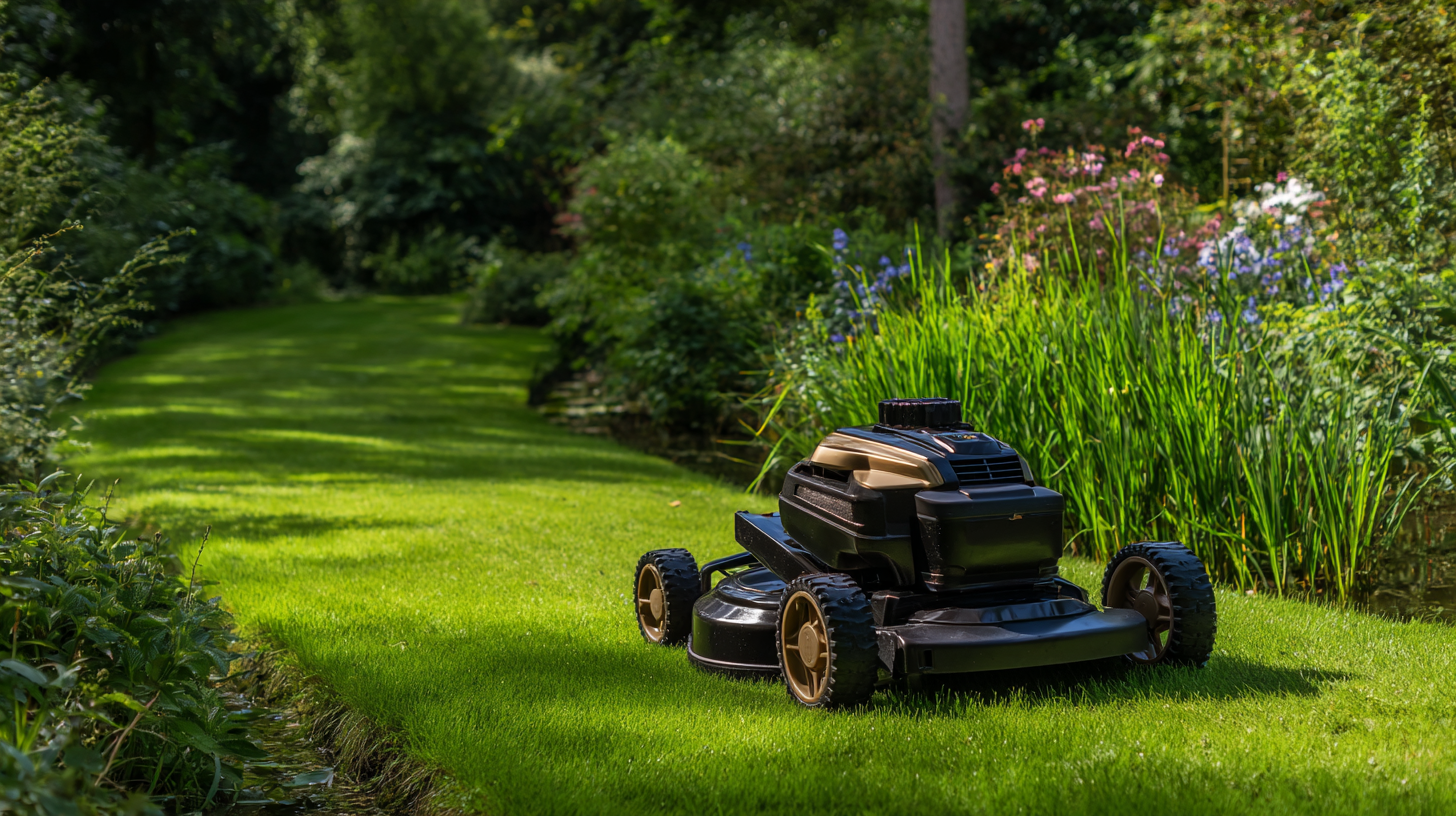Innovative Designs of Mower Grass Cutters Transforming Landscape Maintenance Efficiency
Table of Contents
- Revolutionizing Landscape Maintenance: The Role of Innovative Mower Designs
- Top 5 Features of Modern Grass Cutters Enhancing Efficiency in Lawn Care
- How Smart Technology in Mowers is Redefining Landscaping Productivity
- The Impact of Ergonomic Designs on User Comfort and Work Efficiency
- Cost-Benefit Analysis: Investing in Advanced Mowers for Long-Term Savings
- Sustainable Practices: Eco-Friendly Mower Innovations Transforming Landscapes
- FAQS
- Related Posts
The landscape maintenance industry is undergoing a significant transformation, driven by innovative designs in Mower Grass Cutters that enhance efficiency and effectiveness. Recent industry reports indicate that the global lawn mower market is expected to reach $30 billion by 2025, with electric mowers gaining popularity due to their eco-friendliness and lower operational costs. Changzhou Hantechn Imp. & Exp. Co., Ltd. stands at the forefront of this evolution, providing high-quality power garden tools and hand tools, certified by ISO 9001, BSCI, and FSC. With over a decade of expertise in developing customized garden products for various brands, Hantechn is committed to optimizing landscape maintenance through advanced Mower Grass Cutter designs that meet the rigorous demands of today's market.

Revolutionizing Landscape Maintenance: The Role of Innovative Mower Designs
The landscape maintenance industry is experiencing a significant transformation, thanks to the advent of innovative mower designs that enhance efficiency and productivity. These modern mowers incorporate advanced technology, including robotics and smart sensors, which allow for precise cutting patterns and reduced operator fatigue. With features like automatic height adjustment and programmable schedules, landscapers can achieve a consistently manicured look without the extensive manual effort traditionally required.
Moreover, the integration of eco-friendly designs in mower technology is setting a new standard for sustainability in landscape maintenance. Electric and battery-powered mowers produce zero emissions and operate quietly, making them ideal for residential areas and reducing noise pollution. This shift not only aligns with environmental goals but also resonates with clients who prioritize green practices. As these innovative mower designs continue to revolutionize landscape maintenance, they not only optimize workflow but also contribute to a healthier planet.
Innovative Designs of Mower Grass Cutters Transforming Landscape Maintenance Efficiency
| Model | Cutting Width (inches) | Engine Power (HP) | Weight (lbs) | Cutting Height (inches) | Fuel Type |
|---|---|---|---|---|---|
| EcoMower X1 | 21 | 5.0 | 50 | 1.5 - 4 | Gasoline |
| TurboCut Pro | 26 | 6.5 | 60 | 1 - 3.5 | Diesel |
| SmartMow Z2 | 20 | 4.5 | 45 | 1.5 - 3 | Electric |
| MaxCut 3000 | 30 | 7.0 | 70 | 2 - 5 | Gasoline |
| GreenCut EV | 22 | 5.5 | 55 | 1 - 3 | Electric |
Top 5 Features of Modern Grass Cutters Enhancing Efficiency in Lawn Care
Modern grass cutters have revolutionized landscape maintenance, integrating advanced technologies that greatly enhance efficiency in lawn care. Among the top features, battery-powered mowers are leading the charge toward sustainability. According to a report by Research and Markets, the electric lawn mower market is projected to grow at a CAGR of 8.4% through 2027, driven by their quiet operation and lower carbon emissions, making them an eco-friendly alternative to traditional gasoline mowers.
Another significant advancement is the inclusion of smart technology, such as GPS-guided navigation and automated mowing schedules. The industry analysis by Statista reveals that smart lawn care devices are expected to reach a market value of over $3 billion by 2025, reflecting a growing appreciation for precision in lawn maintenance. Additionally, features like adjustable cutting heights and mulching capabilities enhance the user experience while promoting healthier grass growth and reduced lawn waste. These innovations not only streamline the mowing process but also contribute to a greener environment and improved lawn aesthetics.
Top 5 Features of Modern Grass Cutters Enhancing Efficiency in Lawn Care
How Smart Technology in Mowers is Redefining Landscaping Productivity
The integration of smart technology into mower grass cutters is revolutionizing landscaping productivity. According to a report from the National Association of Landscape Professionals (NALP), landscape maintenance professionals are increasingly adopting smart mowers with features such as GPS navigation and autonomous operation, which can improve efficiency by up to 30%. These advanced systems not only reduce labor costs but also minimize human error, ensuring a more precise lawn care experience.
Moreover, the use of robotic mowers equipped with AI is becoming a game-changer in the industry. A study by Research and Markets indicates that the global market for robotic lawn mowers is expected to grow exponentially, reaching $1 billion by 2026. These intelligent machines can schedule mowing times, adjust their blades according to grass length, and alert owners when maintenance is needed, allowing for enhanced productivity and reduced downtime.
Tip: When selecting a smart mower, consider features like app connectivity and weather sensors. This can help streamline your lawn care routine by allowing you to monitor and control your mower remotely. Also, make sure to look for options that offer easy navigation and customization to fit the unique layout of your landscape.
The Impact of Ergonomic Designs on User Comfort and Work Efficiency
In recent years, the trend of integrating ergonomic designs into mower grass cutters has significantly transformed the landscape maintenance industry. These innovations prioritize user comfort, minimizing strain and fatigue during prolonged use. Features such as adjustable handles, lightweight materials, and improved grip textures enable operators to maintain optimal posture while working. This thoughtful design reduces the physical toll on users, allowing them to complete tasks more efficiently and with less discomfort, ultimately leading to enhanced productivity.
Moreover, ergonomic designs are not solely about comfort; they directly impact work efficiency. By fitting tools to the user's natural movements, these mowers streamline operations, making it easier to navigate tight spaces and uneven terrain. Enhanced maneuverability reduces the time spent on each job, allowing professionals to service more properties in less time. As these ergonomic advancements continue to proliferate in mower designs, they set a new standard for performance, demonstrating that user-centric principles can lead to significant improvements in both comfort and efficiency in landscape maintenance.

Cost-Benefit Analysis: Investing in Advanced Mowers for Long-Term Savings
Investing in advanced mower technology has become essential for enhancing landscape maintenance efficiency. According to a recent report from the American Society of Landscape Architects, utilizing innovative mower designs can reduce labor costs by up to 30%. This is largely attributed to features such as automatic height adjustment, efficient fuel consumption, and the integration of smart technology for optimal performance. As landscape professionals adopt these modern tools, they are reaping the benefits of decreased maintenance time and improved cutting precision, which directly translates to better-looking lawns and gardens.

The long-term savings from these advanced mowers are compelling. A cost-benefit analysis by the Landscape Maintenance Association has shown that while upfront costs may be higher — with advanced mowers averaging about $5,000 compared to traditional models at around $2,500 — the return on investment can be realized in less than three years due to reduced operational costs and lower fuel consumption rates. Moreover, machines that incorporate electric power or hybrid systems are showing a decrease in greenhouse gas emissions by 50%, making them not only cost-effective but also environmentally friendly. As the landscaping industry continues to embrace these innovations, the financial advantages become increasingly clear, encouraging the shift towards smarter maintenance strategies.
Sustainable Practices: Eco-Friendly Mower Innovations Transforming Landscapes
The landscape maintenance industry is witnessing a remarkable transformation, fueled by innovative, eco-friendly technologies aimed at promoting sustainable practices. A significant factor driving this change is the burgeoning demand for electric lawn mowers, which is projected to grow from approximately $6.11 billion in 2025 to $11.69 billion by 2035 in North America alone, reflecting a compound annual growth rate (CAGR) of 6.7%. As landscape professionals increasingly shift from gas-powered equipment to battery-powered alternatives, the environmental impact of lawn maintenance is set to diminish substantially, aligning with broader sustainability goals.
Companies are embracing autonomous and environmentally friendly solutions that not only enhance efficiency but also conserve resources. For instance, golf courses in California are implementing advanced water conservation technologies that have been reported to save up to 30% on irrigation costs annually. Such initiatives highlight the potential of integrating innovative tech in landscaping practices to promote eco-friendly approaches. As new startups emerge with fresh ideas and cutting-edge technologies, the landscape industry is positioned for a sustainable revolution, redefining how we maintain green spaces while prioritizing environmental stewardship.
FAQS
: Modern mowers are incorporating advanced technology such as robotics, smart sensors, GPS-guided navigation, and automated mowing schedules to enhance efficiency and productivity in landscape maintenance.
Features like automatic height adjustment and programmable schedules allow landscapers to achieve a well-manicured look with less manual effort, thereby reducing operator fatigue.
Electric and battery-powered mowers produce zero emissions and operate quietly, making them eco-friendly alternatives that help reduce noise pollution and align with sustainability goals.
The electric lawn mower market is projected to grow at a CAGR of 8.4% through 2027, indicating increasing demand for sustainable lawn care solutions.
Features such as adjustable cutting heights and mulching capabilities contribute to healthier grass growth and reduced lawn waste, enhancing the overall lawn care experience.
Smart technology features, like GPS-guided navigation and automated schedules, allow for more precise lawn maintenance, which is increasingly valued by consumers.
Innovative mower designs optimize workflow by streamlining the mowing process and allowing for tasks to be completed more efficiently with greater precision.
The growing market for smart lawn care devices, expected to reach over $3 billion by 2025, reflects a trend towards precision and automation in landscape maintenance.
Modern mowers align with client preferences for greener practices by offering eco-friendly features and reducing carbon footprints, which resonate with clients who prioritize sustainability.
Mulching capabilities reduce lawn waste by returning grass clippings to the soil, promoting nutrient cycling and contributing to a healthier ecosystem.
Related Posts
-

What Makes the Best Gas Push Mower Stand Out Among the Rest
-

How to Choose the Best Small Petrol Lawnmower for Your Garden: Expert Tips and Insights
-

The Future of Cordless Grass Trimmer Innovations Transforming Lawn Care
-

How to Choose the Best Top Lawn Mowers for Your Landscaping Needs
-

Global Trust in Quality with the Best Electric Lawn Mower Featuring Roller Technology Made in China
-

7 Essential Tips for Choosing the Best Self Propelled Mulching Lawn Mower Today!
Blog Tags:


